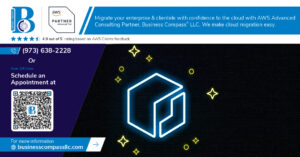Modern businesses generate massive amounts of data daily, but turning that raw information into actionable insights remains a major challenge. Building a scalable data lake with AWS using the medallion architecture model offers a proven solution that transforms chaotic data into organized, analytics-ready assets through structured bronze, silver, and gold data layers.
This comprehensive guide targets data engineers, cloud architects, and analytics teams who need to implement robust data lake solutions on AWS. You’ll discover how the medallion architecture creates a clear data transformation pipeline from raw ingestion to business-ready insights, while maintaining data quality and governance at scale.
We’ll walk through the core medallion architecture principles and show you how AWS services like S3, Glue, and Lake Formation work together to create your lakehouse architecture. You’ll also learn practical strategies for implementing security and governance across all layers, plus proven techniques for optimizing both performance and costs as your data lake grows.
By the end, you’ll have a clear roadmap for building a production-ready AWS data lake that follows data lake best practices and scales with your organization’s needs.
Understanding the Medallion Architecture Model for Data Lakes
Core principles of Bronze, Silver, and Gold data layers
The medallion architecture organizes your AWS data lake into three distinct layers that progressively refine data quality. The Bronze layer acts as your raw data landing zone, ingesting unprocessed information from various sources directly into AWS S3 without transformation. The Silver layer cleanses and standardizes this raw data, removing duplicates and applying business rules to create reliable datasets. The Gold layer represents your analytics-ready data, aggregated and optimized for business intelligence tools and machine learning models.
Benefits of structured data processing and quality improvement
This layered approach delivers significant advantages for scalable data lake architecture. Data quality improves systematically as information moves through each layer, reducing downstream analytical errors. Processing becomes more efficient since teams can consume data at the appropriate quality level for their use case. Development teams gain faster time-to-insight because they don’t need to repeatedly clean the same datasets. The structure also enables better data lineage tracking and governance, making it easier to troubleshoot issues and maintain compliance across your AWS data engineering pipeline.
How Medallion Architecture differs from traditional data lake approaches
Traditional data lakes often become data swamps where raw information sits without clear organization or quality standards. The medallion pattern prevents this chaos by enforcing a structured progression from raw to refined data. Unlike conventional approaches that mix processed and unprocessed data in the same storage areas, this architecture maintains clear boundaries between data maturity levels. Teams can easily identify which datasets are production-ready versus experimental, reducing the risk of using unreliable data for critical business decisions in your lakehouse architecture implementation.
AWS Services Essential for Medallion Architecture Implementation
Amazon S3 for scalable data storage across all medallion layers
Amazon S3 serves as the foundational storage backbone for your medallion architecture, providing virtually unlimited capacity and 99.999999999% durability across bronze, silver, and gold layers. Its flexible storage classes enable cost optimization—use Standard for frequently accessed gold layer analytics data, Standard-IA for silver layer processed datasets, and Glacier for long-term bronze layer archival. S3’s native partitioning capabilities support efficient data organization by date, region, or business unit, while lifecycle policies automatically transition data between storage tiers. The service integrates seamlessly with other AWS data services, enabling direct querying through Athena and automated processing via Glue, making it the perfect foundation for scalable data lake architecture.
AWS Glue for automated data cataloging and ETL processes
AWS Glue transforms complex data pipeline management into streamlined automation, discovering schema changes automatically and maintaining consistent metadata across your medallion layers. Its serverless ETL engine scales on-demand, processing bronze-to-silver transformations like data cleansing, deduplication, and format standardization without infrastructure management. Glue’s Data Catalog acts as a centralized metadata repository, enabling seamless data discovery and lineage tracking across teams. The service supports both batch and streaming workloads, with built-in connectors for databases, SaaS applications, and data warehouses. Visual ETL jobs simplify complex transformations through drag-and-drop interfaces, while custom Python or Scala scripts handle advanced business logic requirements.
Amazon Athena for serverless query capabilities
Amazon Athena delivers instant analytics without server provisioning, allowing data scientists and analysts to query petabytes of data directly from S3 using standard SQL. Its pay-per-query model eliminates fixed costs while columnar formats like Parquet reduce scan volumes by up to 90%, significantly lowering expenses. Athena integrates natively with Glue’s Data Catalog, automatically discovering table schemas and partitions for optimal query performance. The service supports advanced analytics through user-defined functions, machine learning predictions via Amazon SageMaker, and federated queries across multiple data sources. Query results cache automatically, accelerating repeated analytics workloads and dashboard refreshes.
AWS Lake Formation for centralized data governance
AWS Lake Formation centralizes data governance across your entire medallion architecture, providing granular access controls at database, table, and column levels through a single management interface. Its blueprint-driven approach automates common data ingestion patterns from relational databases, reducing setup time from weeks to hours. Lake Formation’s fine-grained permissions integrate with IAM and Active Directory, ensuring consistent security policies across analytical tools like Athena, Redshift, and EMR. The service maintains comprehensive audit logs for compliance requirements while its data filters enable row-level security without performance degradation. Machine learning-powered data classification automatically tags sensitive information, streamlining governance at enterprise scale.
Designing Your Bronze Layer for Raw Data Ingestion
Setting up S3 buckets with optimal partitioning strategies
Structuring your bronze layer S3 buckets requires strategic partitioning to optimize query performance and cost management. Implement date-based partitioning using year/month/day/hour patterns for time-series data, while geographic or business unit partitions work well for organizational data. Create separate buckets for different data sources to maintain isolation and apply appropriate access controls. Use consistent naming conventions like bronze-raw-data-source-name and configure bucket versioning to track data lineage. Enable S3 Transfer Acceleration for global data ingestion and set up Cross-Region Replication for disaster recovery scenarios.
Implementing real-time data streaming with Amazon Kinesis
Amazon Kinesis Data Streams serves as the backbone for real-time data ingestion in your medallion architecture. Configure multiple shards based on your expected throughput, with each shard handling up to 1MB/second or 1,000 records/second. Set up Kinesis Data Firehose to automatically deliver streaming data to your bronze layer S3 buckets with built-in compression and format conversion. Implement dead letter queues using Amazon SQS to handle failed records and maintain data integrity. Use Kinesis Analytics for real-time processing when immediate insights are needed before data lands in your bronze layer.
Configuring batch data ingestion from multiple sources
Design robust batch ingestion pipelines using AWS Glue ETL jobs to handle various data sources including databases, APIs, and file systems. Create crawlers to automatically discover schema changes and update your AWS Glue Data Catalog accordingly. Implement AWS DataSync for efficient transfer of large datasets from on-premises systems, while Lambda functions handle smaller, event-driven ingestion tasks. Set up AWS Step Functions to orchestrate complex multi-source ingestion workflows with proper error handling and retry mechanisms. Use AWS Database Migration Service (DMS) for continuous replication from operational databases.
Establishing data retention policies and lifecycle management
Implement intelligent tiering with S3 Lifecycle policies to automatically move older data through storage classes based on access patterns. Transition data from Standard to Infrequent Access after 30 days, then to Glacier after 90 days, and Deep Archive for long-term retention. Configure deletion rules for temporary processing files and logs to prevent storage cost accumulation. Use S3 Object Lock for compliance requirements and enable MFA Delete for critical datasets. Set up CloudWatch alarms to monitor storage costs and data growth patterns, automatically triggering cost optimization actions when thresholds are exceeded.
Building the Silver Layer for Data Transformation and Cleansing
Creating Automated Data Quality Checks and Validation Rules
Building robust data quality frameworks in your silver layer starts with AWS Glue DataBrew and custom validation scripts that automatically detect anomalies, missing values, and schema violations. Set up automated rules using AWS Lambda triggers that scan incoming data against predefined business logic, checking for data completeness, accuracy ranges, and format consistency. Create exception handling workflows that quarantine problematic records while allowing clean data to flow through your transformation pipeline. Use AWS CloudWatch metrics to monitor quality scores and establish alerting thresholds that notify your team when data quality drops below acceptable levels.
Implementing Incremental Data Processing with AWS Glue Jobs
Design AWS Glue ETL jobs that process only new or changed records using partition-based processing and watermark strategies to optimize performance and reduce costs. Configure Glue bookmarks to track processed data and prevent reprocessing of unchanged records during subsequent runs. Implement change data capture (CDC) patterns using DynamoDB streams or database transaction logs to identify modified records efficiently. Schedule jobs using AWS Glue triggers that respond to S3 events or run on time-based schedules, ensuring your silver layer stays current with minimal latency while managing compute resources effectively.
Standardizing Data Formats and Schema Evolution Management
Establish consistent data formats across your silver layer using Apache Parquet or Delta Lake formats that support schema evolution and efficient querying patterns. Implement AWS Glue Schema Registry to manage schema versions and ensure backward compatibility when source systems introduce new fields or modify existing structures. Create standardized naming conventions and data type mappings that align with your organization’s data governance policies. Use AWS Glue crawlers to automatically detect schema changes and update your data catalog, maintaining consistency between your physical data structure and metadata definitions.
Setting Up Data Lineage Tracking for Compliance Requirements
Deploy AWS DataZone or integrate third-party lineage tools to create comprehensive data flow documentation that tracks data movement from bronze through silver layers. Configure AWS CloudTrail logging to capture all data transformation activities, creating audit trails that satisfy regulatory compliance requirements. Implement tagging strategies that mark sensitive data elements and track their transformation journey through your medallion architecture. Build automated lineage maps using AWS Glue job metadata and S3 access logs, providing clear visibility into data dependencies and transformation logic for compliance reporting and impact analysis.
Constructing the Gold Layer for Analytics-Ready Data
Aggregating data for business intelligence and reporting needs
Transform your cleaned silver layer data into strategic business insights through intelligent aggregation patterns. Build pre-calculated metrics, KPIs, and dimensional models that align with your organization’s reporting requirements. Use AWS Glue ETL jobs to create daily, weekly, and monthly aggregations that power executive dashboards and operational reports. Implement star and snowflake schemas optimized for analytical workloads, ensuring your gold layer serves as the single source of truth for business intelligence initiatives.
Creating optimized data models for fast query performance
Design your gold layer with query performance as the primary focus. Partition data strategically using business-relevant dimensions like date, region, or product category to enable query pruning. Implement columnar storage formats like Parquet with optimal compression algorithms such as SNAPPY or GZIP. Create clustered indexes on frequently queried columns and maintain table statistics for the query optimizer. Use Amazon Athena’s CREATE TABLE AS SELECT (CTAS) operations to materialize complex joins and aggregations, reducing query execution times from minutes to seconds.
Implementing data marts for specific business domains
Establish domain-specific data marts within your gold layer to serve specialized analytical needs. Create separate logical containers for finance, marketing, sales, and operations data, each optimized for their unique access patterns and performance requirements. Use AWS Lake Formation to implement fine-grained access controls, ensuring teams only access relevant business domain data. Structure each data mart with standardized naming conventions, consistent data types, and shared dimension tables to maintain data consistency while enabling self-service analytics across different business units.
Implementing Security and Governance Across All Layers
Configuring IAM roles and policies for least-privilege access
Set up granular IAM roles for each medallion architecture layer to control data access precisely. Create separate roles for bronze, silver, and gold layers with specific permissions – bronze users get read-only access to raw data, silver analysts receive transformation permissions, while gold layer consumers access only curated datasets. Use resource-based policies with S3 bucket prefixes to enforce layer boundaries and prevent unauthorized cross-layer access.
Setting up data encryption at rest and in transit
Enable S3 server-side encryption with AWS KMS for your AWS data lake storage across all medallion layers. Configure separate encryption keys for bronze, silver, and gold buckets to maintain data isolation. Implement SSL/TLS encryption for data in transit using HTTPS endpoints for API calls and encrypted connections for ETL processes. Set up AWS Certificate Manager to handle SSL certificates for custom applications accessing your scalable data lake architecture.
Establishing data classification and tagging strategies
Implement consistent tagging across your medallion architecture using AWS Resource Tags to categorize data by sensitivity, compliance requirements, and business domain. Create mandatory tags for data classification levels (public, internal, confidential), data owners, retention periods, and medallion layer designation. Use AWS Config rules to automatically enforce tagging policies and ensure compliance with your data lake governance framework throughout the bronze silver gold data layers.
Implementing audit logging and compliance monitoring
Activate AWS CloudTrail to capture all API calls and data access events across your medallion architecture implementation. Configure S3 access logging and VPC Flow Logs to track data movement between layers. Set up Amazon CloudWatch dashboards to monitor data lake best practices compliance and create automated alerts for suspicious activities. Use AWS Config to continuously assess resource configurations against your governance policies and maintain audit trails for regulatory compliance requirements.
Optimizing Performance and Cost Management
Implementing intelligent data tiering with S3 storage classes
S3 storage classes form the backbone of cost optimization in your medallion architecture data lake. Configure S3 Intelligent-Tiering for bronze layer raw data to automatically move infrequently accessed objects to cheaper storage tiers without performance penalties. Apply S3 Glacier for long-term archival of historical bronze data that rarely gets queried. Silver layer processed data benefits from Standard-IA storage class after 30 days, while gold layer analytics datasets should remain in Standard storage for fast query performance. Lifecycle policies automatically transition objects based on access patterns, reducing storage costs by up to 70% without manual intervention. Monitor data access patterns through CloudWatch metrics to fine-tune your tiering strategy and ensure optimal cost-performance balance across all medallion layers.
Configuring auto-scaling for compute resources
Auto-scaling transforms your AWS data lake into a responsive, cost-effective system that adapts to varying workload demands. EMR clusters with auto-scaling policies dynamically add or remove instances based on YARN memory utilization and pending tasks. Configure target utilization between 60-80% to balance performance with cost efficiency. Glue jobs benefit from DPU auto-scaling, automatically adjusting compute capacity during ETL processing across bronze, silver, and gold layers. Set up CloudWatch alarms to trigger scaling events when job queues exceed thresholds or when processing times increase beyond acceptable limits. Lambda functions handling real-time data ingestion scale automatically, but configure reserved concurrency to prevent cost spikes during unexpected traffic surges. Redshift Spectrum queries scale seamlessly, but monitor concurrent query limits to avoid throttling during peak analytics workloads.
Monitoring and optimizing query performance across layers
Query performance optimization requires continuous monitoring and strategic indexing across your medallion architecture layers. CloudWatch provides essential metrics for tracking query execution times, data scan volumes, and resource utilization patterns. Enable AWS X-Ray tracing for complex ETL pipelines to identify bottlenecks in data transformation processes between layers. Partition your data strategically in bronze layer by ingestion date and in silver/gold layers by commonly queried dimensions like region or product category. Delta Lake’s Z-ordering feature dramatically improves query performance by co-locating related data physically. Use Athena’s query result location and enable result caching to reduce repeated data scanning costs. Monitor Glue job bookmarks to prevent reprocessing of unchanged data, reducing compute costs and improving pipeline efficiency. Create materialized views in gold layer for frequently accessed aggregations, trading storage cost for query speed improvements.
The Medallion Architecture Model offers a proven framework for building robust data lakes on AWS that can grow with your business needs. By organizing your data into bronze, silver, and gold layers, you create a clear path from raw ingestion to analytics-ready insights. The key lies in choosing the right AWS services for each layer – S3 for storage, Glue for transformation, and Lake Formation for governance – while keeping security and cost optimization at the forefront of your design decisions.
Getting started with this approach doesn’t have to be overwhelming. Begin with a solid bronze layer foundation, then gradually build out your silver and gold layers as your data requirements become clearer. Remember that the real value comes from implementing proper governance and monitoring from day one. This investment in structure and security will pay dividends as your data lake scales and more teams begin relying on it for critical business decisions.




















